How Do I Grow Ginger Plants? A Beginner’s Step-by-Step Guide
- February 7, 2024
- 1 comment
Ginger, with its unique flavor and numerous health benefits, is a versatile spice that can be easily grown at home. Cultivating ginger plants not only provides you with a fresh and organic source of this popular spice but also allows you to witness the fascinating process of plant growth. In this beginner’s guide, we’ll walk you through the step-by-step process of growing ginger plants, from selecting the right rhizomes to harvesting your homegrown ginger.
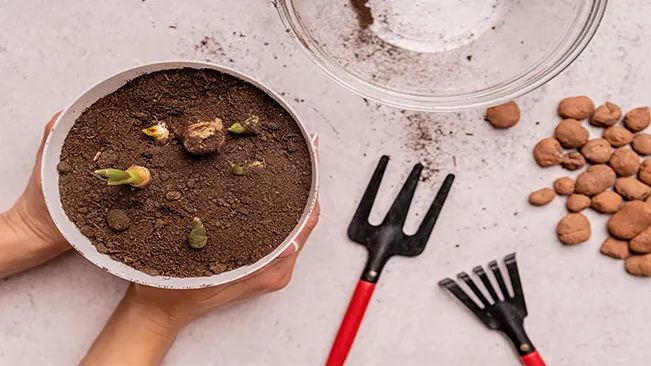
Benefits of Ginger Plant
| Benefit | Description |
|---|---|
| Anti-Inflammatory | Reduces inflammation, helpful for conditions like arthritis |
| Digestive Aid | Alleviates indigestion, nausea, and digestive discomfort |
| Anti-Nausea | Effective against motion sickness and morning sickness |
| Immune Booster | Supports the immune system with its antioxidant properties |
| Pain Relief | May help reduce muscle pain and soreness |
| Lowering Blood Sugar | Shows potential in helping regulate blood sugar levels |
| Cardioprotective | May contribute to heart health by improving blood circulation |
| Anti-Cancer Properties | Some studies suggest anti-cancer potential |
| Weight Management | Aids in weight loss by promoting a feeling of fullness |
| Respiratory Support | Assists in relieving respiratory issues like cough and cold |
| Menstrual Pain Relief | Alleviates menstrual pain and discomfort |
Selecting the Right Rhizomes
Start your ginger-growing journey by choosing high-quality rhizomes, which are the underground stems of the ginger plant. Look for plump, firm rhizomes with visible “eyes” or buds. You can find suitable rhizomes at local nurseries or grocery stores. Opt for organic rhizomes whenever possible to ensure a healthier start for your ginger plants.
Common Ginger (Zingiber officinale)
This is the most widely cultivated and commonly used ginger variety. Known for its culinary use, it has a pungent flavor and is used in cooking and for medicinal purposes.
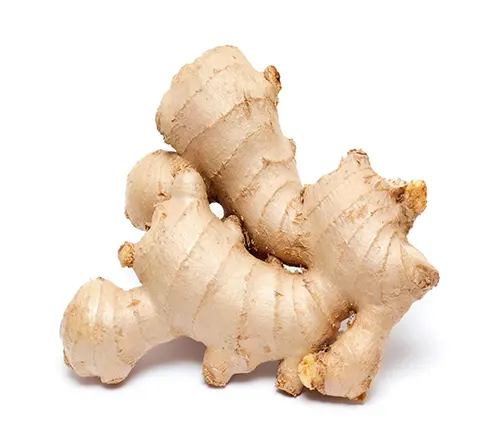
Galangal (Alpinia galanga)
Often referred to as “Thai ginger” or “greater galangal,” it is used in Southeast Asian cuisine. Galangal has a citrusy, pine-like flavor and is a key ingredient in many Thai and Indonesian dishes.
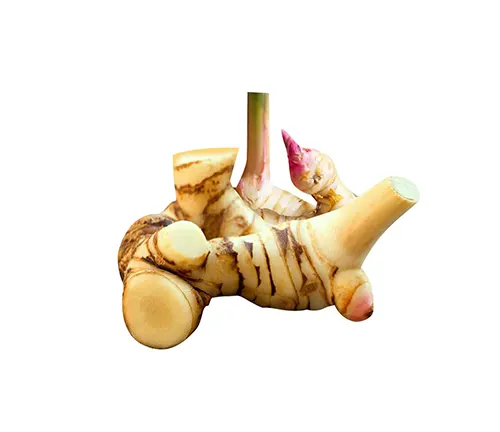
Turmeric (Curcuma longa)
While primarily known for its use as a spice, turmeric is a type of ginger. It has a warm, bitter taste and is recognized for its vibrant yellow color and health benefits.
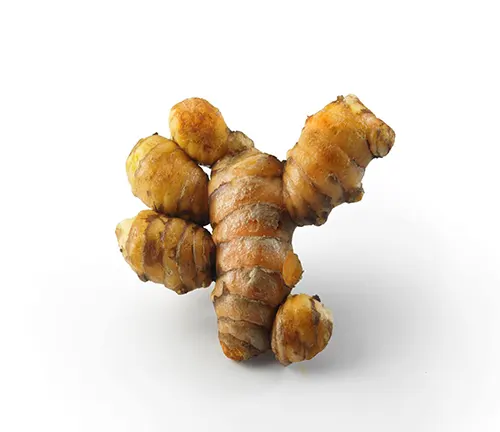
Shell Ginger (Alpinia zerumbet)
Also known as the “pink porcelain lily,” it is valued for its ornamental foliage. Shell ginger has attractive green leaves with a slight pinkish tint and is often grown for landscaping purposes.
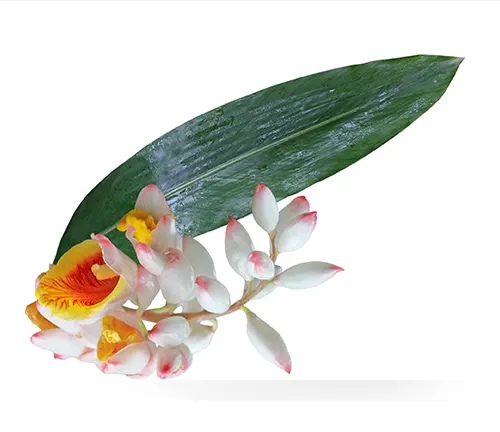
Awapuhi Ginger (Zingiber zerumbet)
Native to Southeast Asia, awapuhi ginger is cultivated for its ornamental and medicinal properties. The plant has large, attractive leaves and produces cone-like clusters of white flowers.

Hidden Ginger (Curcuma petiolata)
This ginger variety is known for its showy, cone-shaped flowers that come in various colors. Hidden ginger is often grown as an ornamental plant and is appreciated for its aesthetic appeal.
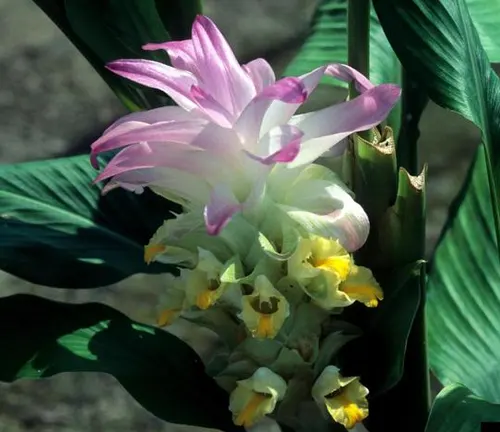
Torch Ginger (Etlingera elatior)
Also called “wild ginger” or “porcelain rose,” it is native to Southeast Asia. Torch ginger is known for its large, vibrant flowers and is often used in tropical flower arrangements.
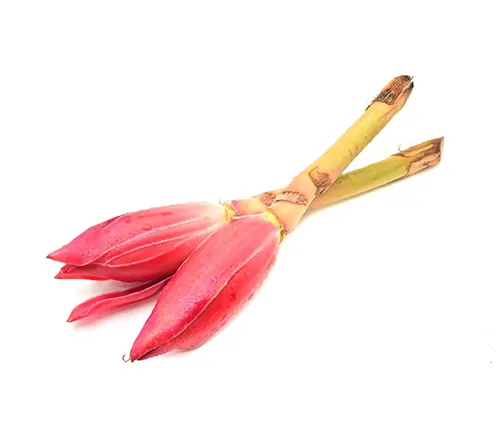
White Ginger Lily (Hedychium coronarium)
This fragrant ginger variety is prized for its white, lily-like flowers. White ginger lily is grown both for its ornamental value and the pleasant scent of its blooms.
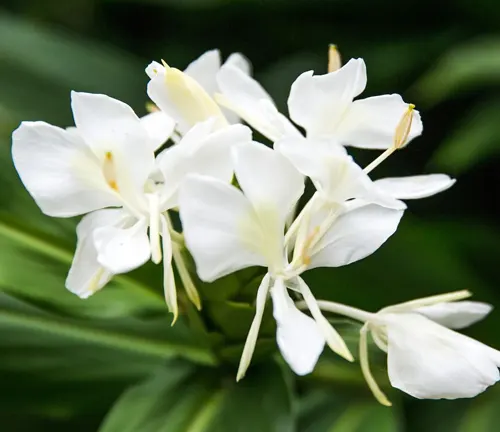
Choosing the Right Container
Ginger plants are well-suited for container gardening, making them an excellent choice for those with limited outdoor space. Select a wide, shallow container with drainage holes to prevent waterlogged soil. Use a well-draining potting mix rich in organic matter to create an ideal environment for ginger growth.
Container Size
Opt for a container that is at least 12 inches deep. Ginger plants produce rhizomes that grow horizontally, so a deeper container allows ample space for their development. The width of the container is equally important. Choose a wide and shallow container to accommodate the lateral spread of the ginger rhizomes.

Material
Select a container made of a durable, lightweight material. Plastic, ceramic, or fabric pots are commonly used for growing ginger. Ensure that the container has drainage holes to prevent waterlogging, as ginger roots are susceptible to rot in overly wet conditions.
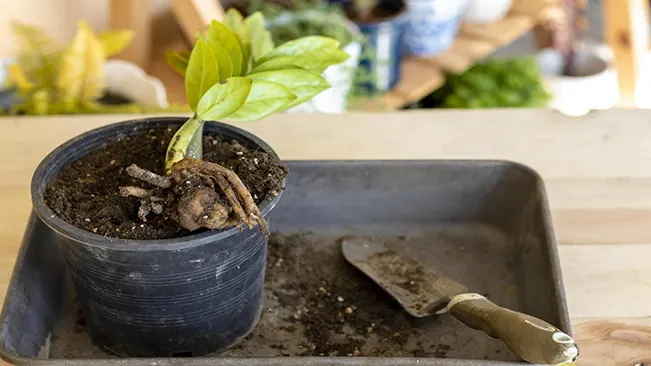
Drainage
Good drainage is essential for ginger plants. Excess water can lead to root rot and other issues. If the chosen container doesn’t have drainage holes, consider drilling some to facilitate water drainage.
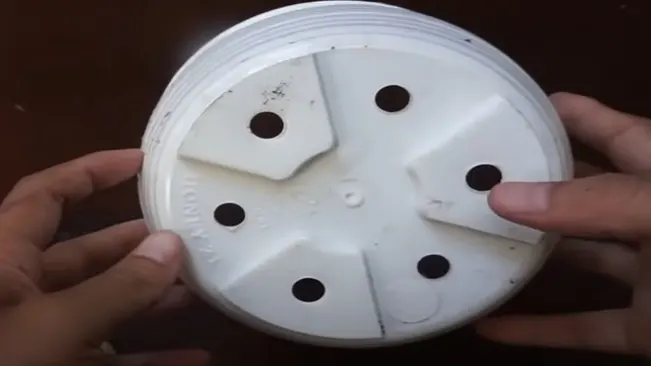
Insulation
Ginger is sensitive to temperature changes, especially cold temperatures. Choose a container that provides some insulation against extreme temperatures. Consider placing the container on pot feet or insulating it with a layer of mulch.
Portability
If you live in a region with cold winters, choose a container that allows for easy relocation. This way, you can move your ginger plant indoors during colder seasons to protect it from frost.
Aesthetics
Consider the aesthetics of the container, especially if you plan to grow ginger as an ornamental plant. Choose a pot that complements your indoor or outdoor space.
Number of Plants
Determine the number of ginger plants you intend to grow in a single container. Ensure that there is enough space between each plant for proper growth. Spacing of at least 6 inches between rhizomes is recommended.
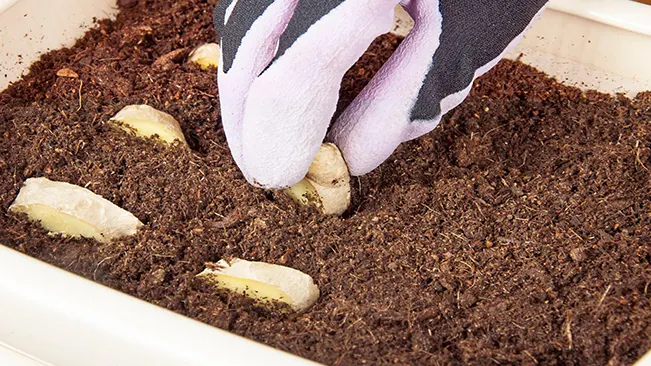
- Reusable and Sustainable
If you plan to grow ginger annually, choose a container that is reusable and easy to clean. Sustainable options, such as fabric pots made from recycled materials, can be environmentally friendly choices. - Elevated Containers
Consider using raised or elevated containers to provide better air circulation around the ginger plants. This can help prevent diseases and promote overall plant health. - Saucer or Tray
Place a saucer or tray under the container to catch excess water. This prevents water damage to surfaces and allows the plant to absorb any excess moisture as needed.
Planting Ginger Rhizomes
Plant your selected rhizomes about 2 inches deep in the potting mix, ensuring the buds are facing up. Space multiple rhizomes at least 6 inches apart to allow room for growth. Water the soil lightly after planting and place the container in a warm, partially shaded area.
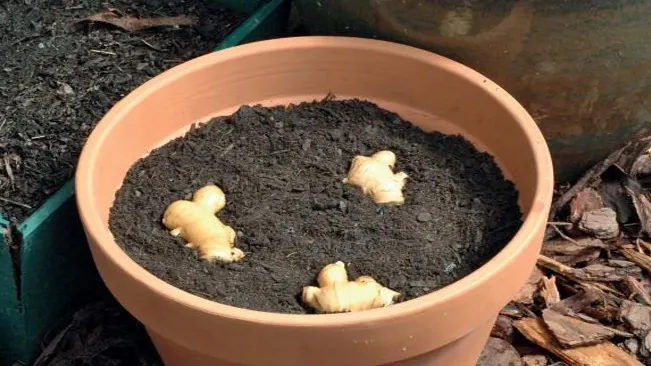
Providing the Right Conditions
Ginger plants thrive in warm and humid conditions. Maintain a temperature between 75-85°F (24-29°C) and ensure they receive indirect sunlight. If you live in a colder climate, consider growing ginger indoors or moving the container indoors during the colder months.
Watering and Fertilizing
Keep the soil consistently moist but not waterlogged. Water the ginger plants regularly, ensuring the soil doesn’t dry out completely. Use a balanced fertilizer every 2-4 weeks during the growing season to provide essential nutrients for healthy plant development.
Harvesting Ginger
Once the ginger plants have reached maturity, typically after 8-10 months, you can start harvesting. Gently dig around the rhizomes, being careful not to damage the plant. Harvest only what you need, leaving the remaining rhizomes in the soil to continue growing.
Wait for the Right Time
Ginger is typically ready for harvest 8-10 months after planting. The timing can vary based on the growing conditions and the ginger variety. Wait until the leaves turn yellow and start to die back naturally.
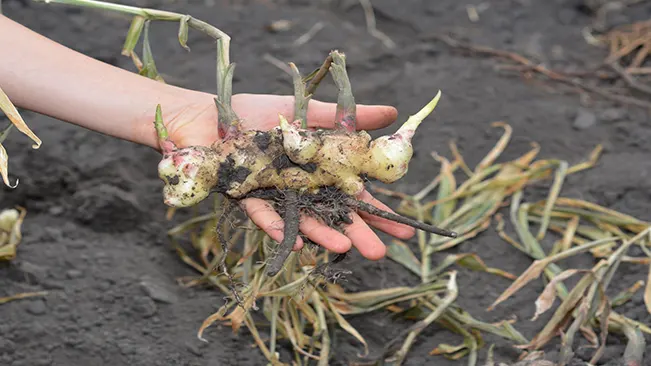
Check the Rhizomes
Gently move the soil away from the base of the plant to expose the rhizomes. Examine the ginger rhizomes to ensure they have reached a suitable size for harvesting. They should be plump and have a yellowish or beige color.
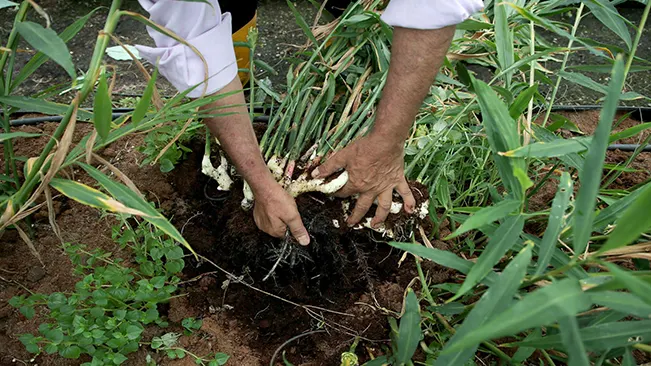
Prepare for Harvest
Before harvesting, water the ginger plants lightly. This helps to loosen the soil and makes it easier to extract the rhizomes without causing damage.
Use a Garden Fork or Spade
Carefully use a garden fork or spade to dig around the base of the ginger plant. Work your way around the plant, gradually loosening the soil.

Lift the Rhizomes
Once the soil is loosened, gently lift the rhizomes from the soil. Be cautious not to damage the rhizomes during the process. If you plan to continue growing ginger, leave some rhizomes in the soil for the next season.
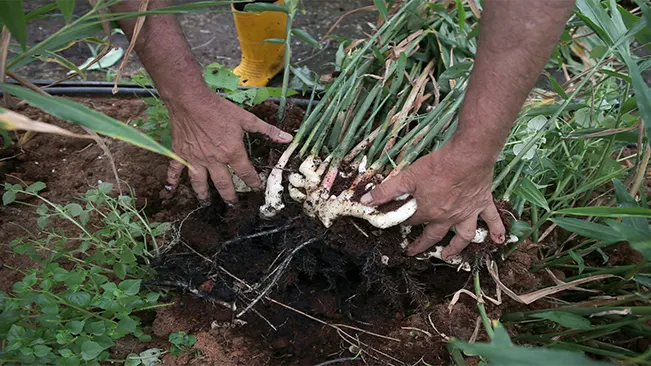
Trim the Stems and Leaves
After harvesting the rhizomes, trim the stems and leaves close to the rhizomes. This helps redirect energy back to the remaining plant and prepares the harvested ginger for storage.

Clean the Ginger
Rinse the harvested ginger rhizomes with water to remove excess soil. Use a soft brush or cloth to clean them gently. Avoid using harsh chemicals or soaps.
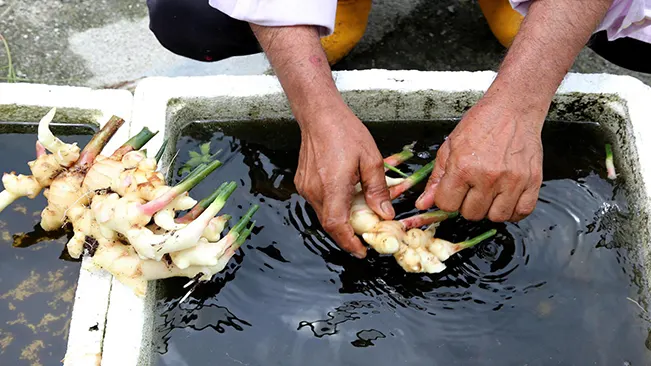
Allow Drying
Allow the cleaned ginger to air-dry for a few hours. This helps the outer skin to dry and improves storage quality.
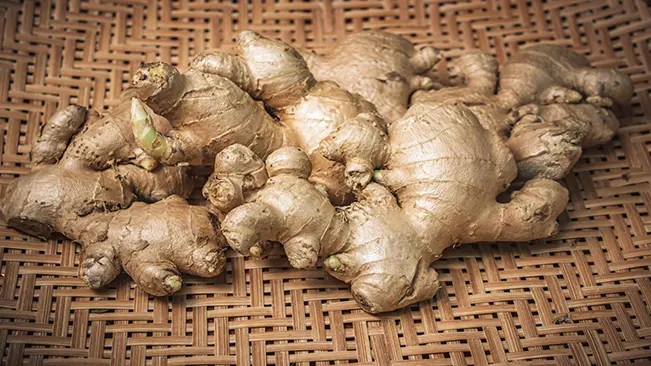
Store or Use Immediately
Store the harvested ginger in a cool, dry place. It can be stored as is, or you can peel and slice it for easier use. Alternatively, use the fresh ginger immediately in your culinary creations.
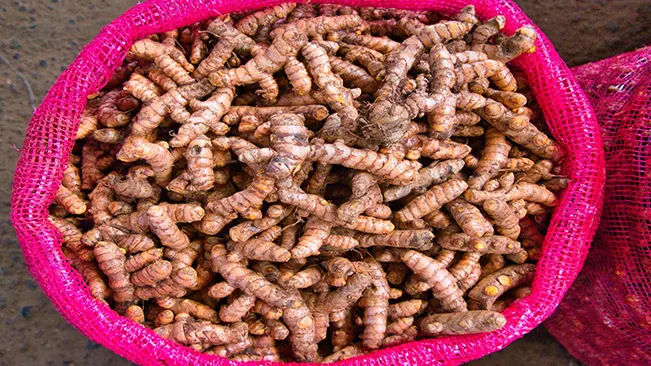
Leave Some Rhizomes for Next Season
If you plan to continue growing ginger, leave a portion of the rhizomes in the soil when harvesting. This ensures that the plant has the potential to regrow in the next growing season.
Conclusion
Growing ginger plants at home is a rewarding experience that allows you to enjoy the freshest and most flavorful ginger while witnessing the fascinating growth process. With the right rhizomes, suitable containers, and proper care, you can cultivate your ginger supply and add a touch of homegrown spice to your culinary adventures.
FAQs (Frequently Asked Questions)
- How do I choose the right ginger rhizomes for planting?
Select firm, plump ginger rhizomes with well-developed growth buds or “eyes.” Look for high-quality rhizomes from a reputable source. - Can I grow ginger indoors, and what type of container is suitable?
Yes, ginger can be grown indoors. Choose a wide, shallow container with good drainage to prevent waterlogging. A depth of at least 12 inches is recommended to accommodate rhizome growth. - What kind of soil is best for planting ginger?
Use a well-draining, nutrient-rich potting mix. A combination of potting soil and organic compost works well. Aim for a slightly acidic to neutral pH level. - How deep should I plant ginger rhizomes?
Plant ginger rhizomes about 2 to 4 inches deep in the soil with the eyes facing up. Space multiple rhizomes at least 6 inches apart. - How much sunlight do ginger plants need?
Ginger plants prefer partial to full shade. If growing indoors, place the container near a window with filtered sunlight. Outdoors, choose a location with dappled sunlight or partial shade. - How often should I water my ginger plants?
Keep the soil consistently moist but not waterlogged. Ginger plants prefer a humid environment, so misting the leaves can be beneficial. Water sparingly during the dormant period. - What temperature range is ideal for growing ginger?
Ginger thrives in warm temperatures between 75-85°F (24-29°C). Consider growing in containers that can be moved indoors in cooler climates. - When is ginger ready to harvest, and how do I do it?
Ginger is ready for harvest 8-10 months after planting. Wait until the leaves turn yellow and die back, then gently dig around the rhizomes, being careful not to damage them. - Can I use ginger leaves for culinary purposes?
While ginger leaves are not commonly used in cooking, some people use them to make tea. The main culinary focus is on the rhizomes. - How do I store and use freshly harvested ginger?
Rinse harvested ginger rhizomes and store them in a cool, dry place. Use fresh ginger in cooking, or consider drying and grinding it for later use.

Kristine Moore
Forestry AuthorI'm Kristine Moore, a seasoned garden landscaping professional with over 30 years of experience. My extensive career has been dedicated to transforming outdoor spaces into stunning, sustainable landscapes. With a deep understanding of horticulture, design principles, and environmental stewardship, I have become a respected figure in the field, known for creating harmonious, visually appealing, and eco-friendly gardens. My commitment to excellence and continuous learning in landscaping trends and techniques has solidified my reputation as an expert in garden design and implementation.


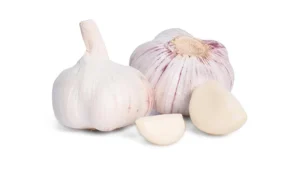






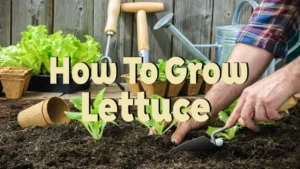
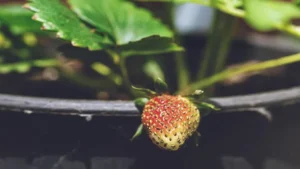


Well educating tips of planting ginger. Will start tomorrow
Matli Victor
February 8, 2024 2:35 pm